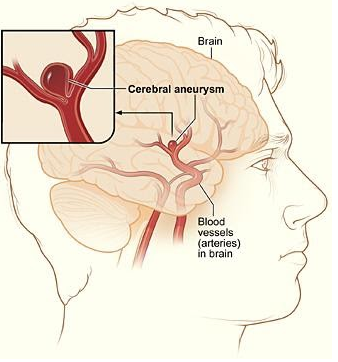

Symptoms
If the intracranial Aneurysm is small, the patient will not show many symptoms. Symptoms of the small aneurysm will occur if the vessel bursts and leads subarachnoid hemorrhage. Dangerous, intense headaches are the most common symptom of this type of haemorrhage.
Other symptoms like alteration in consciousness, vomiting and nausea, neck stiffness, seizures and blurred vision are also reported in afflicted patients.
Diagnosis
For the diagnosis of this condition, there will be a CT or MRI of the brain. To make the best and optimal treatment for the patient, the doctor may do a cerebral angiogram, in which X-ray based techniques are used.
Treatment
There are many possible treatments for intracranial aneurysms. Surgery can also treat this condition through an opening of your skull. After that, a clip placed on the vessel, which will stop the flow of blood in the Aneurysm. Thus, surgical blockage of the aneurysm will make sure it is harmless and does not lead to haemorrhage.
There are also other treatment options like minimally invasive treatment. In this process, the flow of blood to the Aneurysm is stopped. The blood flow is not prevented by using any kind of opening in your skull. Instead, the doctor will guide a micro-catheter to the Aneurysm from an artery in the groin and by utilising the guidance of X-ray. Finally, he will place tiny metal coins in the Aneurysm to block it.
If you go through any of these treatments, you have to stay in the hospital.
Dr Nikolas Charalambous is named among the most prominent interventional radiologist. Get a free consultation for a minimally invasive treatment of brain, neck, and spine.